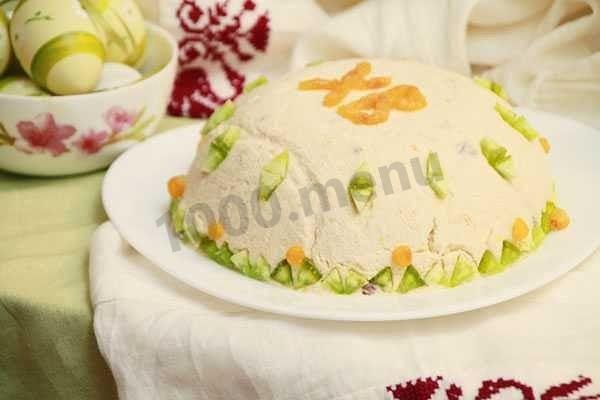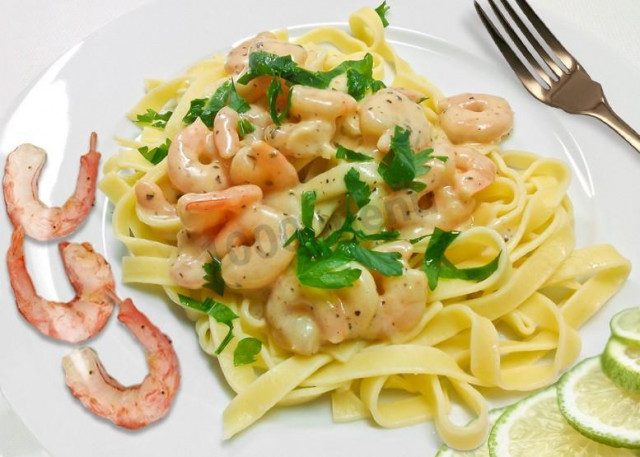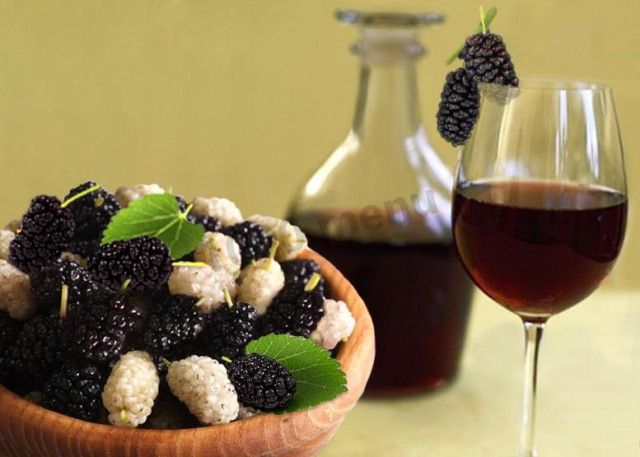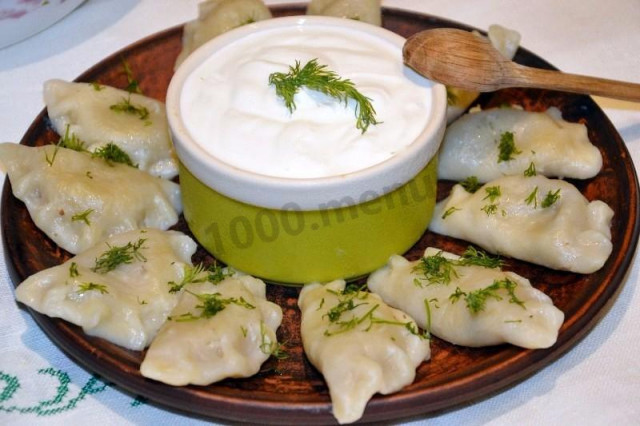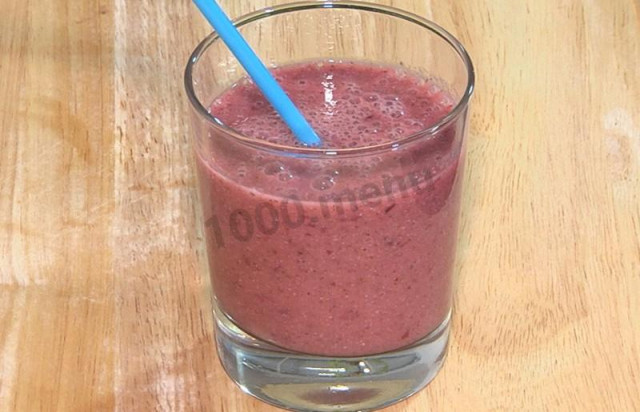Composition / ingredients
Step-by-step cooking
Step 1:

Carefully wipe the cottage cheese with a spoon through a sieve. This is necessary so that there are no lumps in the finished Easter. Beat the yolks with sugar. It is better to do this gradually, because there is a lot of sugar for so many yolks. First, just rub them with a mixer to a white foam. Pour in one or two tablespoons of sugar, whisk again for about a minute, another spoonful and whisk again. After five minutes, you can add all the remaining sugar.
Step 2:
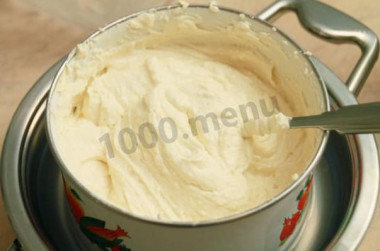
When the yolks are well beaten, add sour cream. Mix the resulting mass with soft butter and grated cottage cheese, thoroughly rub with a mixer until a homogeneous cream. We put a bowl with a curd mass on a steam bath on a small fire. Brew Easter, stirring constantly. The first ten minutes the mass melts, then begins to gradually thicken. After another 20 minutes, the saucepan can be removed from the heat.
Step 3:
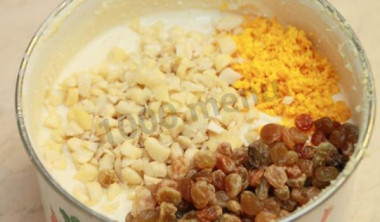
We immediately put the saucepan in a container with cold water. When cooling down, the mass must continue to be constantly disturbed so that it does not exfoliate. The water will have to be changed several times as it warms up. In the cooled curd mass we put the washed raisins, coarsely chopped peeled almonds and the zest of one orange.
Step 4:
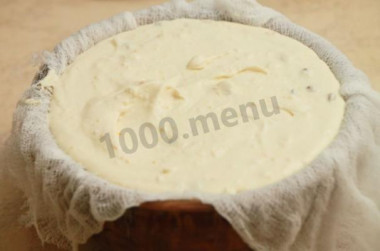
We put the mass in a mold lined with wet, folded in several layers of gauze. As a form, you can take a wooden bowl. It is good that it has a hole at the bottom so that the liquid from the cottage cheese flows down. If there is no such form, you can take an ordinary salad bowl, but then cook the curd mass for 20-30 minutes to evaporate the excess liquid. Cover the top with the edges of the gauze and put a flat board, and a small load on it. We put it in the refrigerator for a day.
Step 5:

The next day, we remove the load and the board, put a plate on top and turn Easter on it. Carefully remove the gauze and decorate.
Caloric content of the products possible in the composition of the dish
- Sour cream with 30% fat content - 340 kcal/100g
- Sour cream of 25% fat content - 284 kcal/100g
- Sour cream with 20% fat content - 210 kcal/100g
- Sour cream of 10% fat content - 115 kcal/100g
- Sour cream - 210 kcal/100g
- Cottage cheese of 40% fat content - 466 kcal/100g
- Cottage cheese of 20% fat content - 233 kcal/100g
- Cottage cheese of 18% fat content - 226 kcal/100g
- Cottage cheese of 10% fat content - 156 kcal/100g
- Low-fat cottage cheese - 75 kcal/100g
- Cottage cheese with sour cream - 260 kcal/100g
- Fruit cottage cheese - 147 kcal/100g
- Soft dietary cottage cheese - 170 kcal/100g
- Cottage cheese "vitalinia" - 64 kcal/100g
- Cottage cheese "morning" ( "danone") without sugar - 91 kcal/100g
- Cottage cheese - 156 kcal/100g
- Almonds nuts - 609 kcal/100g
- Granulated sugar - 398 kcal/100g
- Sugar - 398 kcal/100g
- Butter 82% - 734 kcal/100g
- Amateur unsalted butter - 709 kcal/100g
- Unsalted peasant butter - 661 kcal/100g
- Peasant salted butter - 652 kcal/100g
- Melted butter - 869 kcal/100g
- Raisins - 280 kcal/100g
- Kishmish - 279 kcal/100g
- Orange peel - 97 kcal/100g
- Egg yolks - 352 kcal/100g

